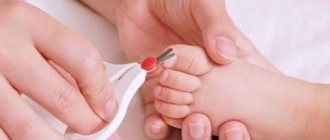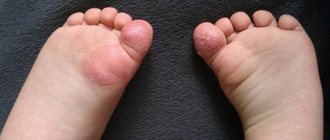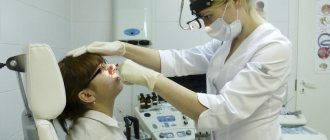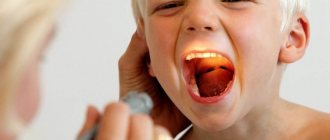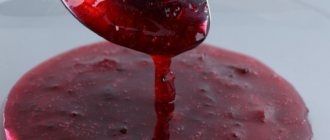Adults most often face the problem of ingrown toenails (onychocryptosis). The disease in most cases occurs due to improper care, unsuitable shoes and concomitant diseases of the foot and nails. But often an ingrown toenail is found in a child; moreover, this problem even affects babies under 1 year of age.
Even a baby can have an ingrown nail.
An ingrown toenail interferes with walking and causes pain to the child. The disease cannot be ignored, as there is a risk of inflammation and suppuration of the finger. As a result, lengthy and complex treatment will be required. To avoid unpleasant consequences, you need to act immediately. What causes the disease and how to get rid of it?
Causes of onychocryptosis in children over 1 year of age
An ingrown toenail does not appear out of nowhere. There are a number of factors that provoke its development. These include:
- Rickets, disorders in the structure of the lower extremities (flat feet, clubfoot, valgus deformity of the arches of the feet).
- Deficiency of vitamins and microelements in the body. The free edge of the nail becomes bent and digs into the surrounding tissue. This happens with a lack of phosphorus, calcium and zinc.
- Incorrectly selected shoes. Trendy models with pointed toes, tight ballet flats or any other shoes of the wrong size lead to excessive compression of the foot and toes. As a result, the edges of the nail gradually become deformed, curl up and literally dig into the skin.
- Accidental damage upon impact. An injured nail (and finger) requires special monitoring: there is always a risk that further growth will be abnormal.
- Nail fungus. In addition to other unpleasant symptoms, this disease leads to disruption of the integrity and shape of the nails.
Problems with nails most often occur when the baby takes his first steps
Often, an ingrown plate is found on the big toe. It is this part of the body that is most susceptible to injury, mechanical friction and irritation.
Why does an ingrown toenail appear?
The most common reason is a genetically determined predisposition.
Among the factors that can provoke inflammation of soft tissues in the ingrowth zone, it should be noted:
- wearing tight shoes;
- chronic injury (during sports);
- transverse flatfoot;
- excessively deep removal of the side edges of the nail when cutting.
As a result, swelling and redness form at the point of contact between the edge of the nail and the surrounding soft tissues, and pain begins to bother you.
Usually, an infection is associated with this - purulent discharge and excessive granulation appear.
+7 (495) 255−50−11.
Correction of an ingrown toenail at the Gradient clinic:
|
|
Why do infants' toenails grow ingrown?
Onychocryptosis, oddly enough, can also be diagnosed in newborns. While in older children and adults the problem is usually localized to the big toe, in children it can affect all the toes. The reason lies in hereditary predisposition. In this case, the nail grows downward rather than forward. Predisposing factors also include congenital diseases - curvature of the nail plate, thickening of the nail fold.
Improper care is one of the reasons for ingrown nails in infants
Improper hygiene care plays a certain role in the occurrence of the problem. If you trim your nails into a rounded shape, the growing side corners will gradually cut into the skin. This process is long and at first asymptomatic.
One of the dangers is that you may not notice for a long time that your baby’s nail is ingrown. The baby will start crying “for no reason.” To prevent this from happening, carefully examine your child’s fingers and feet during hygiene. The slightest redness is a reason to take urgent action.
The instrument with which the procedure is carried out is also important. Thick scissors injure the thin nail plate, and it gradually begins to bend. This is why special “safety” scissors for children are not always the best option. Yes, a child is unlikely to cut himself with such a tool, but not very sharp children's scissors “tear” the nail plate and gradually deform it.
Causes
If you find an ingrown nail bed, you need to find out what caused the defect. Typically, a doctor will help you with this, so you need to see a doctor at this stage.
There are two main types of causes of damage: internal and external. The former are associated with the individual state of health, the functioning of organs, systems, and the latter are associated with the impact of external factors on the feet, which are often associated with the child’s activities.
There are several external causes of defeat:
- Wearing uncomfortable, cheap shoes. Such shoes restrict the baby’s movement, which prevents him from walking correctly and deforms the foot. Because of this, the direction of nail growth changes, and there is a risk of developing flat feet.
- Failure to comply with personal hygiene rules. The factor depends on age. If the child is under 6-7 years old, it is important to carefully monitor the literacy of hygiene procedures and show him how to do them correctly. If you are sweating heavily, it is recommended to wash your feet twice a day.
- Illiterate pedicure. Most often, mothers monitor this parameter, so it is always important to use sterile tools for trimming and cleaning the nail from overgrown skin. If your child does this on his own, show him how to properly treat his nails.
- Mechanical damage to the feet. If the feet, fingers or nails themselves are injured, blood circulation and metabolism worsen, which is why there is a risk of deformation of the plate, so it can grow into the skin.
A competent manicure involves pre-cleaning the tools before work. It is also not recommended to cut off the plate completely without leaving a free edge, as this may change the direction of growth of the nail bed. Be careful when handling the side roller to prevent damage.
Parents are usually responsible for all causes of lesion formation, so you need to pay attention to your child, regardless of his age.
There are more internal reasons related to the child’s health:
- Fungal infection.
- Lack of vitamins and microelements in the body.
- Genetic predisposition.
- Edema.
- Infectious diseases that contribute to the formation of inflammatory processes in the body.
- Circulatory disorders.
Fungal infection is a common cause of ingrown plates, since the factor is only one of the symptoms of the disease. It is quite easy to identify the problem, but it is much more difficult to eliminate it, since many antifungal drugs are prohibited for use by children.
Due to genetics, children also often develop a defect, since the growth characteristics of the nails are adjusted individually from birth.
Only a doctor can tell the exact reason why children have a defect after a thorough diagnosis and examination of the fingers, since sometimes the lesion has a hidden form of development associated with pathogenic bacteria located on the surface. To identify them, you need to take a scraping.
Symptoms of the disease
The first signs of a problem are:
- Painful sensations. Gradually their intensity increases.
- Redness and slight swelling. When an infection occurs, the inflammatory process progresses. Purulent abscesses appear.
- Overgrowth of the affected area with granulation tissue (“wild meat”).
- Increased body temperature.
In infants, identifying an ingrown toenail is not so easy. The baby cannot say what exactly hurts him. The presence of a problem is indicated by causeless whims, restless behavior, crying, and refusal to eat.
Possible complications
A timely start to restore a natural pedicure gives about half of the result, since often if the lesion is ignored it develops into an advanced form, which is very difficult to eliminate.
There are three stages in the development of ingrown toenails:
- The appearance of inflammation, redness of the affected area, part of the free edge rests against the side cushion. When you press on your finger, you may feel an unpleasant sensation.
- The thumb swells and a tear appears in the area of the injury, from which pus may ooze. When walking, and especially running, the child feels discomfort when he steps on one of his feet. The shade of the ingrown nail changes, and the plate itself becomes denser.
- Transition of the defect to the chronic stage of development. Then suppuration appears, the lateral cushion is severely damaged, which is why fouling with granulation tissue becomes visible on the surface. Blood and lymphatic fluid are released, the color of the nail changes to yellow, and dark spots may appear.
If you neglect recovery for a long time, there is a risk of the case reaching the chronic stage. Then there is a risk of consequences or complications.
Typically, the consequences are reflected in the condition of the fingers:
- Abscess;
- Gangrene;
- Osteomyelitis;
- Lymphadenitis.
Sometimes the progression of a lesion to the chronic stage leads to the development of inflammatory processes, their transition to the bones, which is why surgical intervention has to be performed.
It is impossible to cure a defect in the chronic stage on your own, therefore, at the first signs of damage, you need to consult a doctor to restore the deformed plate.
There are three methods to normalize the growth of an ingrown bed: using home methods, surgery, or prescribing medications. It is most effective if the work is carried out comprehensively. This increases the likelihood of complete neutralization of the defect.
Conservative therapy
At the initial stage of the disease, tamponade is used. A gauze plate moistened with a special solution is placed in the area between the nail and the nail fold. It relieves inflammation and provides a disinfecting effect. It should look like this:
Scheme for using tamponade for ingrown toenails.
The next method of treating an uncomplicated form of onychocryptosis is corrective braces, which are installed by a podiatrist. They are attached to the ingrown toenail for a long period of time. Gradually, the device lifts the nail plate, forming its correct shape. These devices are used in children over 5 years of age.
In case of severe inflammation, antibacterial drugs are prescribed. Tetracycline ointment is used as a topical agent. If the wound is suppurated, you cannot do without systemic antibiotics (for oral or intravenous administration), which the doctor will prescribe if necessary. Antiseptics have proven themselves well: ichthyol ointment, Levomekol, Vishnevsky ointment. Since young children's nails are very soft, in most cases the problem is eliminated with conservative treatment, and only in severe cases are more serious methods necessary.
Radical treatment
Surgical methods for treating ingrown toenails in children are used only in exceptional cases. Indications for surgery are congenital anomalies. In this case, the most gentle methods are selected. The doctor removes only part of the ingrown nail plate. To close the defect of the nail fold, a flap of skin is taken from the pad of the same finger. In children under 10 years of age, this procedure is performed under general anesthesia. Local anesthesia is indicated for adults and adolescents. After surgery, experts advise walking around the house barefoot. There is no need to close the wound to allow it to dry out and heal. All that is required of parents is to regularly treat the operated area with brilliant green. Complete healing occurs on days 15–20.
Laser removal is one of the most effective ways to eliminate ingrown toenails.
An equally common method is laser therapy. It can be used to remove or evaporate ingrown toenails. This procedure has a number of advantages. Firstly, it cauterizes the vessels, which prevents blood loss. Secondly, the method reduces the rehabilitation period to 3–4 days. Thirdly, the laser beam acts purposefully and does not injure surrounding tissues. In addition, the manipulation is painless and reduces the risk of relapse. Numerous reviews from parents confirm that this method is preferable for treating ingrown toenails in children.
Radio wave treatment has no less positive characteristics. The method is low-traumatic and does not cause pain. The duration of the recovery period is about 4 days.
Traditional methods of treatment
An ingrown toenail in a child can be healed with traditional medicine recipes. However, such measures are advisable in the initial stages of the disease. If the finger is inflamed and swollen, you will need to consult a pediatrician.
The child's condition will be improved by daily warm baths before bedtime. It is necessary to dissolve sea salt or soda in water (10 g per 1 liter of liquid). For a better effect, you can add a solution of furatsilin or potassium permanganate. If the child does not suffer from hypersensitivity to essential oils, tea tree and bergamot extracts are added to the bath. They soften the skin well. It is also useful to steam the legs in decoctions of medicinal herbs. Chamomile, oak bark, yarrow, and sage have a disinfecting effect. The procedure takes about 20 – 30 minutes.
Before home treatments, your feet need to be well soaked.
Treatment of an ingrown toenail at home involves the use of compresses. A gauze swab soaked in butter, glycerin or melted lamb fat is applied to the problem area. A cellophane bag and a wool sock are put on top. It is better to make such a compress at night, when the child is less active.
After all the procedures described above, the edge of the ingrown nail is lifted and carefully trimmed. The exposed area is treated with hydrogen peroxide or chlorhexidine. Then apply antibacterial ointment or sprinkle with baneocin.
And finally, the most important step is using a roller. Every day, a small piece of sterile bandage, folded into a square or into a tight flagellum, is placed under the nail plate (between the ingrown nail and the wound), and the overgrown edge is filed down. If a child pulls out the roller for one reason or another, it is necessary to secure it with adhesive tape and put socks on top. The roller needs to be laid until the nail begins to grow in the right direction.
